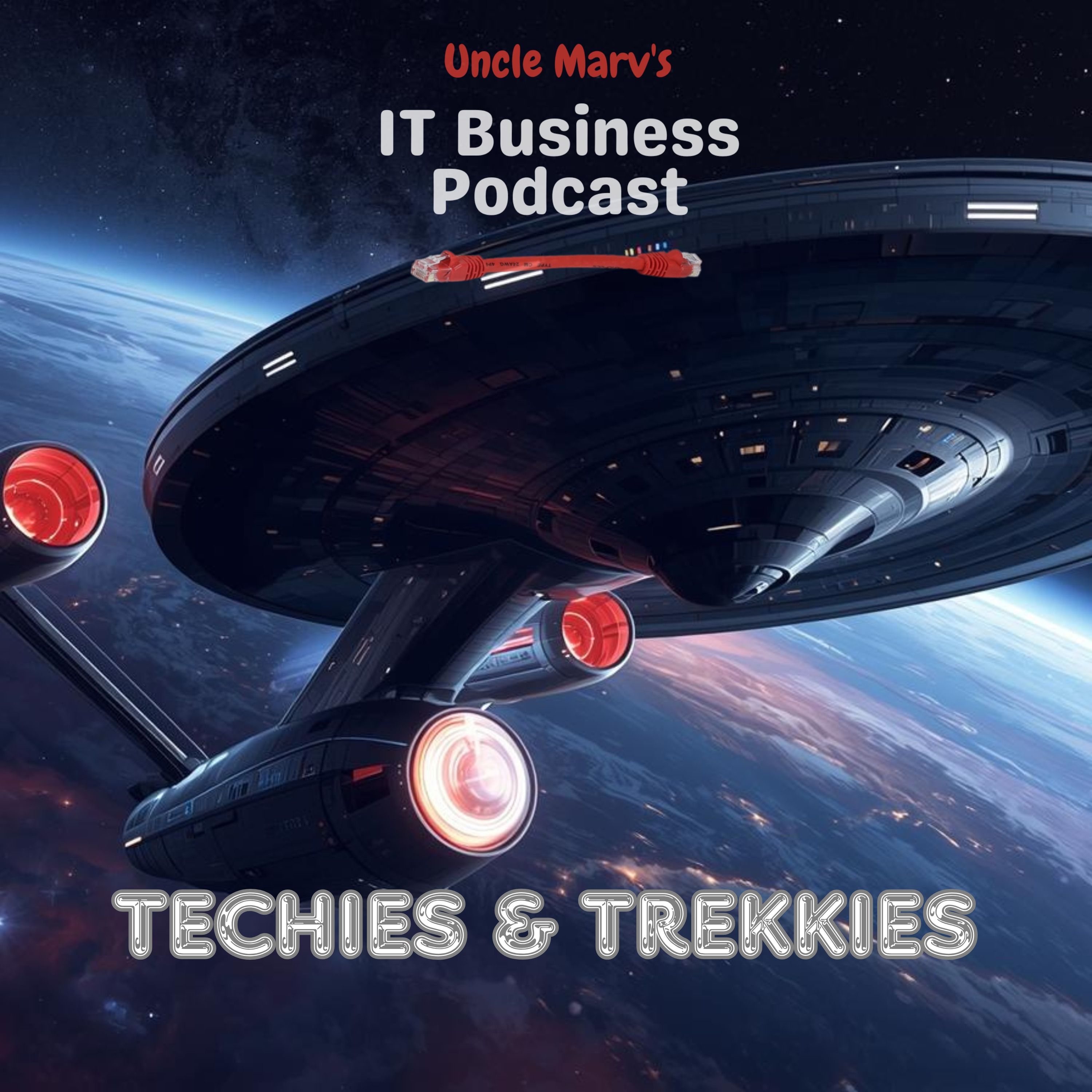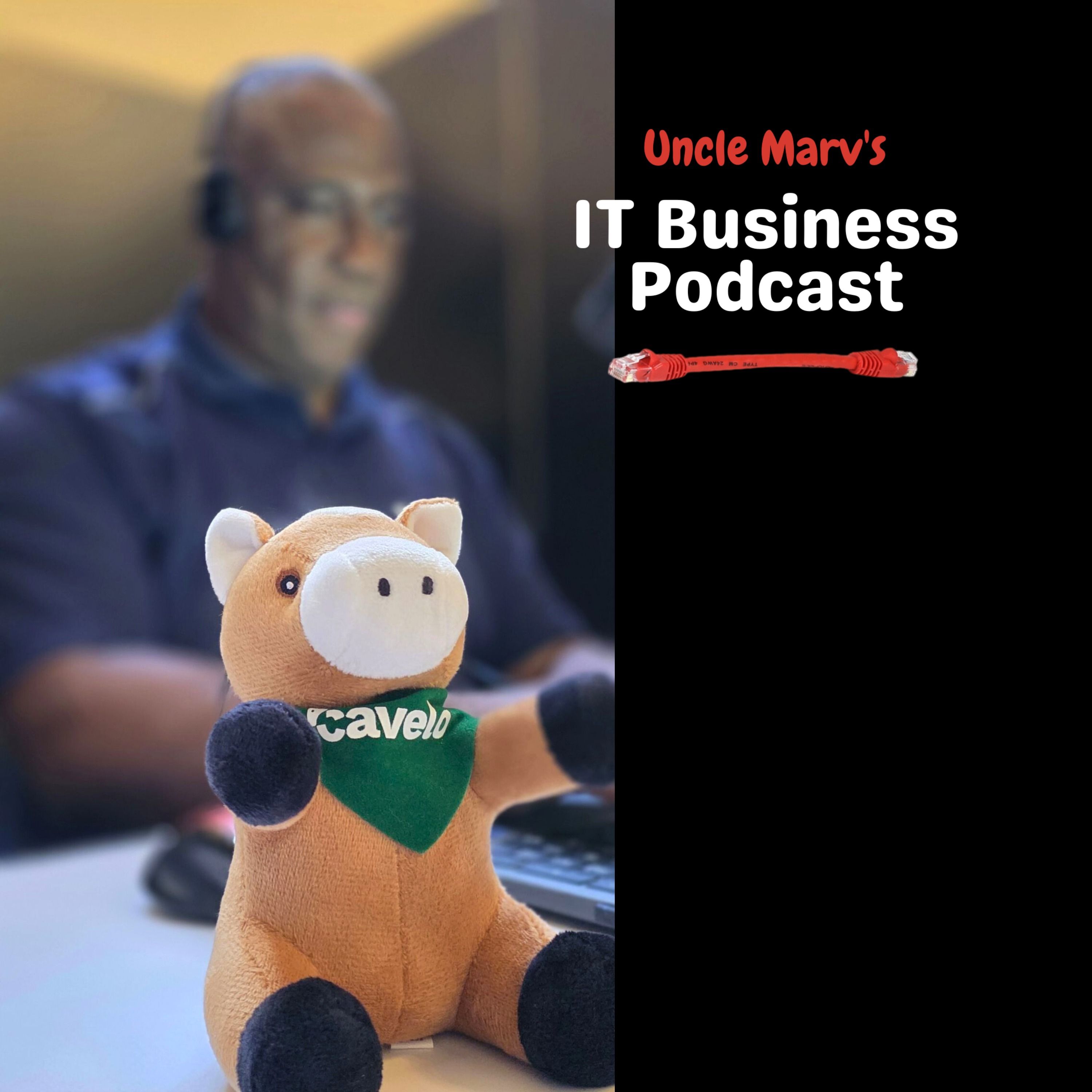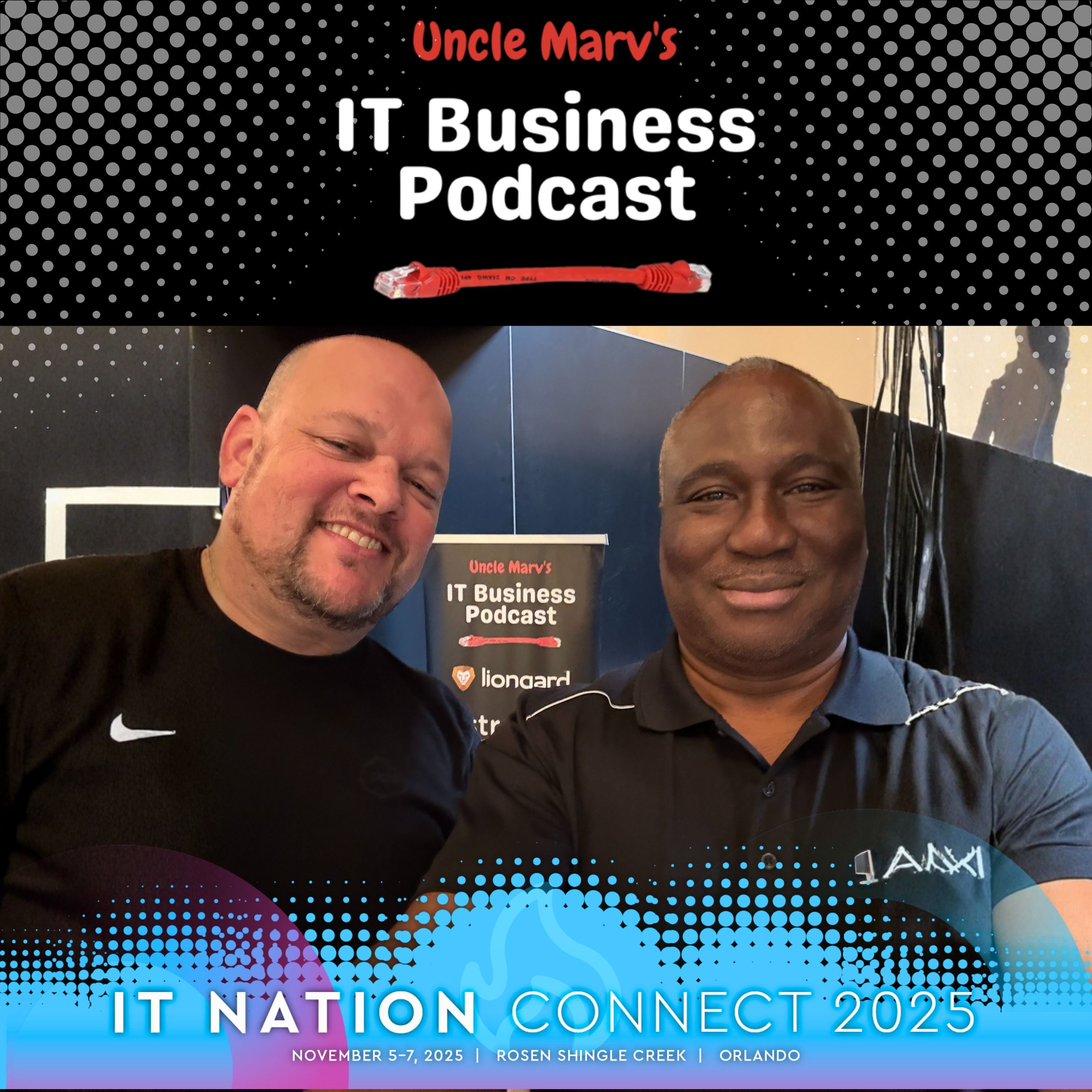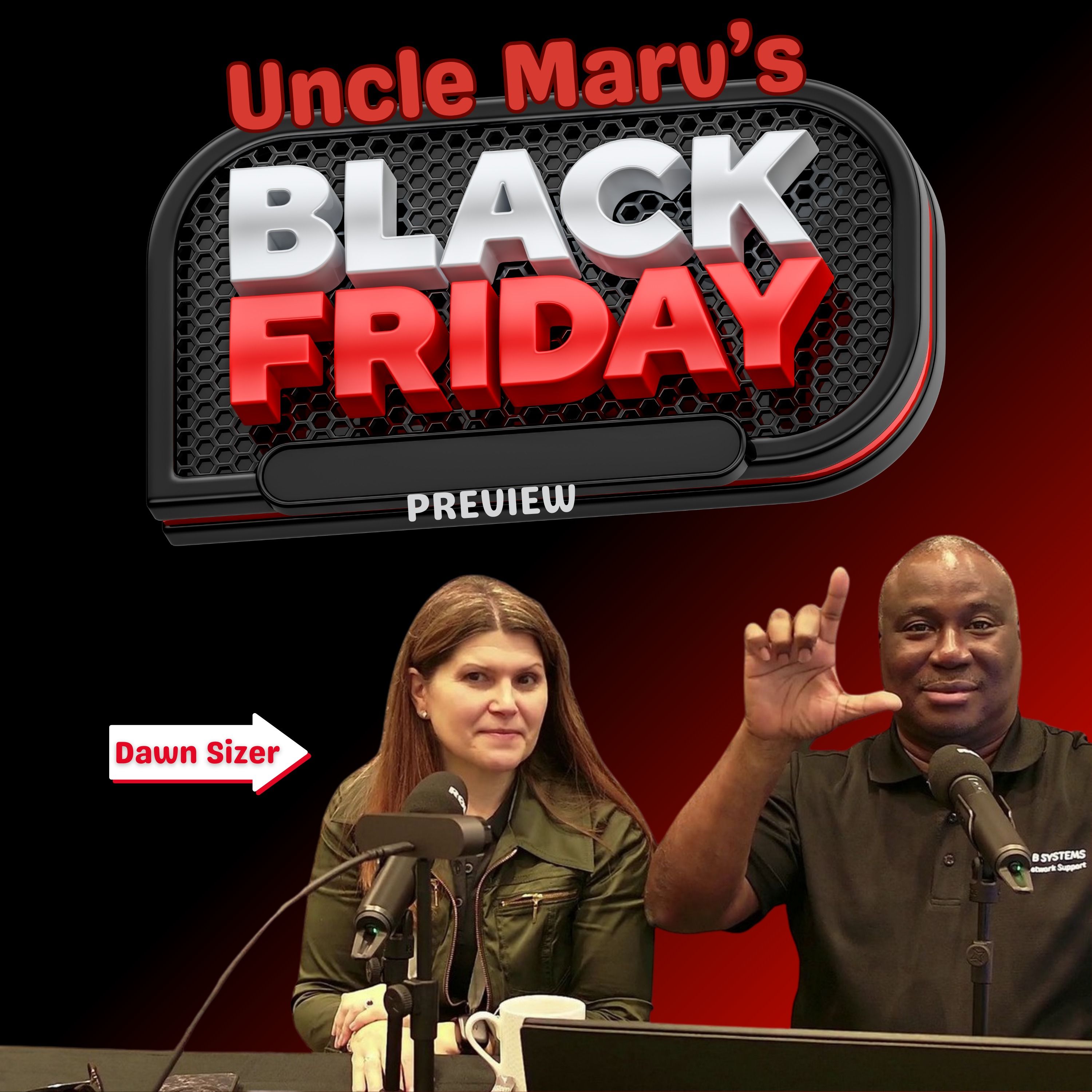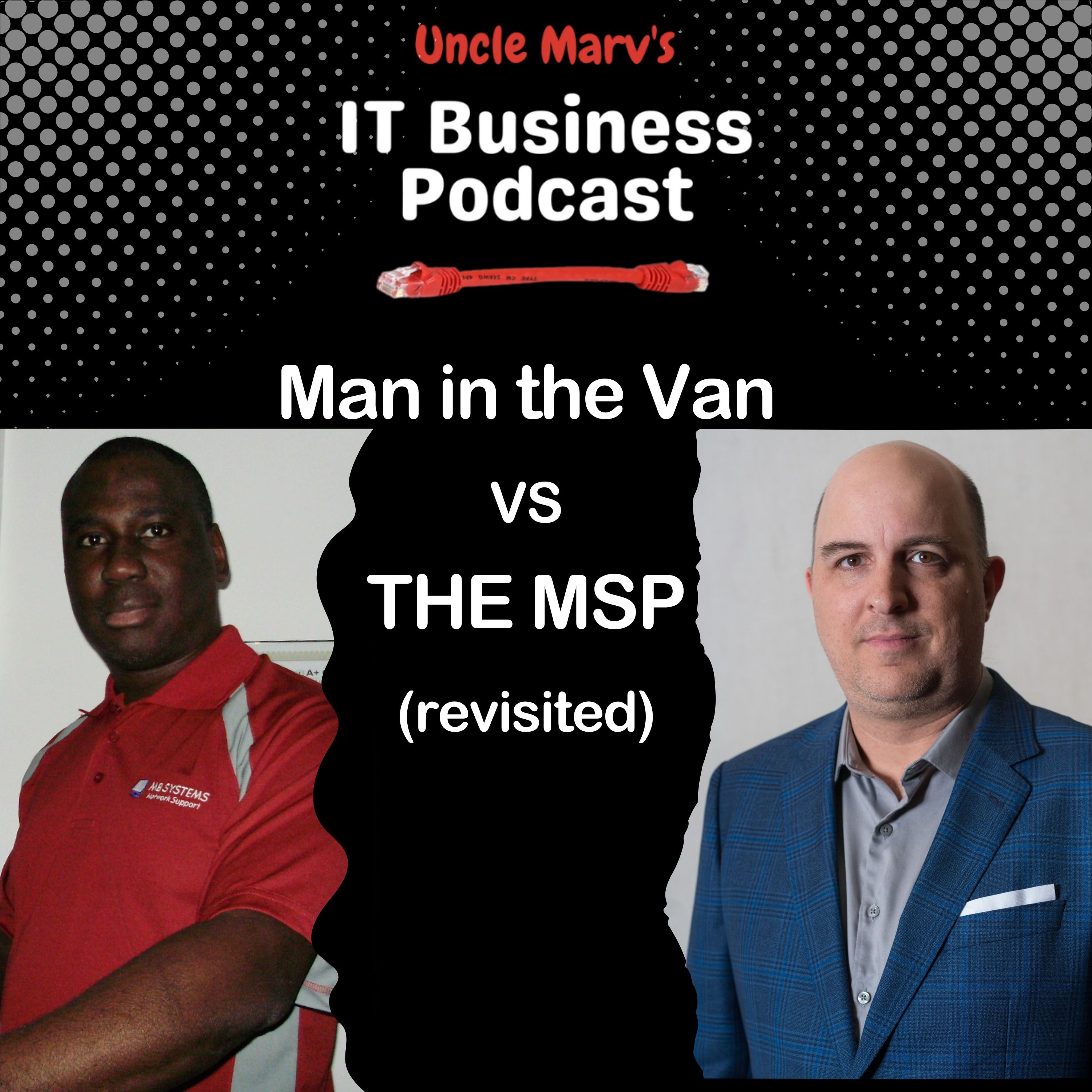635 Kaseya's Nadir Merchant - Cooper, Copilot and More

Uncle Marv visits the Kaseya headquarters in Miami and interviews Nadir Merchant, the General Manager and Chief Technology Officer for Kaseya's IT Operations suite. They discuss Nadir's role in overseeing products like Autotask, BMS, IT Glue, ConnectBooster, and My IT Process, as well as Kaseya's approach to integrating AI into their offerings.
Nadir explains that his primary focus is understanding customer needs and ensuring that Kaseya's product roadmaps address those needs. He emphasizes the importance of building a cohesive ecosystem where different modules work together seamlessly.
One of Nadir's key initiatives is the IT Glue Copilot, which leverages AI to automate documentation management tasks. This includes creating, curating, and making documentation more accessible to users. The Copilot suggests related items based on machine learning algorithms trained on individual customer data.
Nadir stresses that Kaseya is taking a judicious approach to AI integration, focusing on delivering tangible outcomes rather than simply slapping an "AI" label on existing features. He highlights the importance of building a culture around documentation within organizations.
Key Takeaways:
- Kaseya is integrating AI to enhance documentation management and accessibility.
- The IT Glue Copilot suggests related items based on machine learning algorithms.
- Kaseya's approach to AI is focused on delivering tangible outcomes for customers.
- Building a culture around documentation is crucial for effective knowledge sharing.
Links from the show:
IT Glue Copilot: https://www.itglue.com/copilot/
=== Show Information
Website: https://www.itbusinesspodcast.com/
Host: Marvin Bee
Uncle Marv’s Amazon Store: https://amzn.to/3EiyKoZ
Become a monthly supporter: https://www.patreon.com/join/itbusinesspodcast?
One-Time Donation: https://www.buymeacoffee.com/unclemarv
=== Music:
Song: Upbeat & Fun Sports Rock Logo
Author: AlexanderRufire
License Code: 7X9F52DNML - Date: January 1st, 2024
[Uncle Marv] (0:13 - 1:04)
Hello friends, Uncle Marv here with another episode of the IT Business Podcast, the show for IT professionals, managed servicers, no, managed service providers, and no, I will not edit that out, but you know what I mean. This is a show for anyone who is supporting a business and needs help to run that business better, smarter, and faster. This is a very special interview because I have traveled down past the glades into the city of Miami and I am at the Kaseya home base and they've taken me around, given me a nice little tour, shown me the inners of the mothership.
So it's been a good day so far, but right now I am joined by Nadir Merchant, who is, did I get this right? The director of IT operations here at Kaseya.
[Nadir Merchant] (1:04 - 1:15)
A general manager and chief technology officer for our IT operations suite. Yeah, I wasn't going to remember that. Nobody remembers it and nobody knows what it means.
[Uncle Marv] (1:16 - 1:26)
All right, so we're here touring the facility, talking about everything, and which set of products do you manage?
[Nadir Merchant] (1:26 - 2:34)
Sure, so IT complete is arranged in two suites, right? Suites are similar categories of modules, right? We have about 40 modules in total across IT complete.
So I manage the MSP and IT operations suite. So those are all the modules aimed at making IT teams more efficient as opposed to service delivery tools. Service delivery are things like backup and security, RMM, and IT ops is all the things that IT team uses internally to be more efficient.
Ticketing, documentation, accounts receivable automation, VCIO, anything in that realm. So things like Autotask, BMS, IT glue, connect booster, my IT process, all those fall under my purview along with all the workflow integrations we're building between the modules to make them work more cohesively together. All that kind of falls under my purview.
So my role is to understand what our customers need, how we can help and empower them to be more efficient, and then make sure that we're building those things so that the roadmaps are filled with the right things and that our engineering team is executing on delivering on that roadmap.
[Uncle Marv] (2:34 - 2:57)
Okay, so I see why they brought you in to meet with me. Those are pretty much all minus IT glue, the products that I don't use here. So we'll chat about all those in a second here.
But let's real quick to give people a little bit of an idea of who you are. The product that I use, IT glue, you had a little hand in that product, didn't you?
[Nadir Merchant] (2:57 - 3:07)
IT glue is very much my baby. I don't know if all of your viewers know this, but purple is the IT glue color. And it's I've also embraced as my colors.
My car is purple. My whole life is purple. You usually see me adorned in purple.
[Uncle Marv] (3:07 - 3:08)
There's no purple.
[Nadir Merchant] (3:08 - 3:39)
Not today. Not today. But normally every other color.
Yeah, normally I'm head to toe in purple. So I joined Kaseya as part of the acquisition of IT glue. I was the original CTO at IT glue.
I started the engineering team there. And then we were acquired by Kaseya way back in 2016. And then since then, I've kind of expanded my role.
And they've asked me to take on more and more responsibility for the rest of the operations suite. But yeah, IT glue is my baby. It always will be near and dear to my heart.
All right. So I'm wearing IT glue cufflinks, by the way. Oh, there they are.
[Uncle Marv] (3:39 - 3:41)
So I'm rocking some IT glue. There they are. Okay, great.
[Nadir Merchant] (3:41 - 3:41)
Yeah.
[Uncle Marv] (3:41 - 4:31)
All right. So yeah. So the product I use, I do use IT glue.
So kudos for that. And thank you for that product. I use it.
I like it. And they'll probably have to pry it from my cold, dead hands when that time happens. But as for the other suite of products, let's quickly go through.
So I do know the last couple of years, I've not completely followed all of the changes. But, you know, Autotask, DattoRMM, I am a part of the BDR portfolio. But in terms of the IT process or my IT process, as far as I remember, there was this move to move everything into Kaseya 1 and have that be the hub for everything.
Now, is my IT process kind of similar for all those products you mentioned earlier?
[Nadir Merchant] (4:32 - 5:11)
Not quite. So Kaseya 1 is the entry point for IT Complete, right? It's kind of like the Microsoft.com of IT Complete. So where you go to get access to all of your modules, to know who your account manager is, to interact with your bill or look at your subscriptions, change your subscriptions, anything around your administration of all of IT Complete, configuring how your users should map between the modules or who gets access to what, all that happens in Kaseya 1. And then all the actual technical usage of the modules happens within the module. Just like, you know, you go into PowerPoint or Excel to do anything in those tools today.
But if you want to go and change your licensing for Microsoft, you do that through Microsoft.com.
[Uncle Marv] (5:11 - 5:11)
Okay.
[Nadir Merchant] (5:12 - 6:05)
Same idea. My IT process is a VCIO tool, virtual CIO. Basically what it is, it's an account management tool for you to use with your customers.
So that way you can more easily expand your relationship with your customer. So it has a process built into it to help you assess the IT environments for all of your different customers and create alignment between them. So that way you can more easily manage them and be proactive about ensuring that their IT is in a good, stable state.
Right. And you use that alignment process to understand gaps in the IT implementation across your different customers, and then build out a roadmap to get them in alignment with your set of standards. So that way you can make sure that their IT is going to continue to run smoothly.
And you can use that roadmap as a tool to help you sell additional projects and services to those customers to bring them into alignment.
[Uncle Marv] (6:07 - 6:33)
So it sounds like a souped up QBR system. Exactly right. Okay.
Fantastic. Now, part of what you guys have been doing here is, like everybody else, integrating AI into the stuff. I understand that you are a big part of the integration of the Kaseya co-pilot process.
So let's chat about that real quick. Tell me how it's working here.
[Nadir Merchant] (6:33 - 9:05)
Yeah. So we look at AI a little bit differently than a lot of the market out there, right? So every software tool, under the sun, it seems, is integrating AI or talking about AI.
Not just in IT, I mean across the world, right? Every different category. And in my opinion, what I see is a lot of people slapping an AI sticker on their technology so that way they can generate interest from the hype of AI.
And I don't think that's a particularly useful investment for us or beneficial to our customers in any way. So we're being very judicious about our usage of AI and trying to understand how we can best help our customers. At the end of the day, the technology we employ is not nearly as important as the outcomes that we deliver.
Now, if and when AI can help us deliver better outcomes or faster outcomes, that is a huge win for us and it's a huge win for our customers. And we're all over and very interested in it. So we started dipping our toe in the AI world a couple of years ago when we started developing Cooper Insights.
So Cooper Insights analyze how our users use their modules today. And we look for opportunities to make recommendations on how they can get better value out of the things they're using. So inside of Casio One, all of our customers can see their Cooper Usage Insights that says, hey, we noticed your technicians are not using this function.
It'll make them more efficient if they use this when they're trying to remote control. The password insertion in IT Glue that automatically logs them in when they remote control so they don't have to copy and paste the password. So Cooper will find things like that and say, hey, you should use this.
Make sure you're aware of it. Go turn it on. So that helped us build a foundation for understanding usage of our modules, what was going on and to start to build out our database that we could then mine to do other and more interesting things.
So we've now launched IT Glue Copilot, which helps take that learning and insight and bring it into IT Glue to automate some of the documentation management. So we think about AI being useful in different aspects of documentation, from creation of documentation to curation of it. So it's one thing to create documentation.
It's another thing to make sure that it's maintained that it's up to date and that the best information is in the system. And then also making documentation more accessible for users because you have a great documentation system, but if people aren't using it, it's not helpful. So we can use AI to help us with that problem as well.
So we've now developed features inside of Copilot to address each of those different areas.
[Uncle Marv] (9:06 - 9:19)
All right. So you've made a couple of points there. The fact of, we'll start with the last one, the fact that good documentation that people don't use, that's kind of more aimed at us as MSPs that we don't use our own documentation, right?
[Nadir Merchant] (9:19 - 9:54)
And not just you, it's everybody. But yeah, it's definitely a problem that we see in MSPs, but all businesses are like that, right? Somebody is needing to do something and they don't know that a document exists, so they don't go look for it.
Or maybe they know it exists, but they know it's easier to go shoulder tap somebody and say, hey, how do I do this thing? Right? So, and we're big proponents of using culture to help solve that problem, right?
We believe that you have to build a culture around documentation to help deal with that problem. But if we can leverage technology to make this much easier, then we can drive a lot of value into our customers' organizations.
[Uncle Marv] (9:55 - 10:35)
All right. Now, you also talked about how people slapping AI sticker on top of stuff, because it seems for a long time that everybody was just taking what they had already done with scripts and saying that that's AI. Yeah.
And I'm like, no, that's not right here. So you're building AI on top of what you already have. Now, I guess the question is, is how you guys are going to use that to say, pop us a note and say, hey, you should think of doing this, because obviously you've got to be evaluating what we have in there.
[Nadir Merchant] (10:36 - 11:51)
Yeah. So I agree with you completely. A lot of people are slapping AI on things that are just very conventional algorithms that really aren't any different than what they've always had.
We're doing a mix of looking at how we can build algorithms to make documentation more intelligent and also using actual real generative AI, machine learning, and natural language processing in order to help provide better outcomes. What matters to us more than anything is not how we implement it, but the outcome that we deliver, right? In some cases, AI is required in order to be able to deliver the outcome we want.
In other cases, it's not so much. So we'll use whatever the best option is to deliver the value to our customers. So some of the ways that we're actually able to use real, actual AI in order to be able to deliver outcomes that we couldn't otherwise would be doing things like helping identify related items in IT Glue.
So you're an IT Glue user. I assume you're familiar with the concept of related items in IT Glue. Yes.
Okay. For your viewers who maybe are not as familiar, in IT Glue, we have this system to be able to connect documentation together. So if a technician's reading an SOP, they can see, hey, this password helps with this SOP, right?
You need this password in order to do it. Or if you're looking at a switch to be able to say, hey, this SOP relates to this switch in some way.
[Uncle Marv] (11:51 - 11:55)
Right. This document's related to this item. This item's related to that item.
[Nadir Merchant] (11:55 - 11:55)
Exactly.
[Uncle Marv] (11:56 - 11:59)
I mean, that's an easy ABC type of thing.
[Nadir Merchant] (12:00 - 13:21)
Yes. But I'm assuming you've got an AI that's... Exactly.
So historically, this has been done entirely manually, right? Technician has to go and say, okay, this is related to this thing, and then they save it, and it's there forever, right? So we've developed a system now where we automate that.
And we do it in two different ways. We have some where we can say, objectively, the data tells us that these things are related. I know this configuration is owned by this person, so I'm going to relate the contact to the configuration.
Very simple. Then there's other ones where it's a lot more ambiguous, where we can look at a document and say, hey, we think this SOP is related to these other things. So Copilot now provides suggestions to users and says, you're reading this document.
We believe it's related to these other things. Here they are. And then we allow users to then say, yes, this is related.
Check it off. It becomes a related item. Or click an X and just get rid of it, and then it'll be gone forever.
And the nice thing about that is that creates a learning system now. So every time somebody checks on an item or Xs it and says, no, it's not related, the system learns. And it does this on an individual IT Glue account basis.
So your IT Glue account will actually have different knowledge than a different IT Glue account because you have different preferences. You want your IT Glue to behave a little bit differently than some other customers. Everybody has their own preferences on how they do their related items.
So the system's going to learn specific to your account, only looking at your data, and make better and better recommendations over time.
[Uncle Marv] (13:22 - 13:33)
All right. That sounds fantastic. Now, does it also go as far as to tenants underneath that, where I have one client that has one set of tendencies versus another set of clients that may not have those tendencies?
[Nadir Merchant] (13:34 - 13:48)
So right now, for the suggested documentation, it's per account. We don't do it on an organization basis, primarily because the data volume becomes problematic then. If you're not interacting with the system enough, it's not going to be able to learn well enough.
Gotcha.
[Uncle Marv] (13:49 - 14:02)
Gotcha. All right. Well, that all sounds fantastic.
I heard of Cooper probably in the last month or so. Is it actually in production now, or is it being rolled out in stages? How are we along the process?
[Nadir Merchant] (14:02 - 14:09)
So everything I've talked about thus far, Cooper Insights and the Copilot suggestions, those are all in production today, readily available for all customers.
[Uncle Marv] (14:10 - 14:10)
All right.
[Nadir Merchant] (14:10 - 14:13)
And it's totally free. All that stuff is included. We're not charging extra for any of this stuff.
Sweet.
[Uncle Marv] (14:14 - 14:17)
All right. I guess I need to get into my IT Glue and look at it a little more.
[Nadir Merchant] (14:17 - 14:29)
Yeah, you do. By the way, IT Glue Copilot, since we launched it two weeks ago, has created over 175,000 related items in IT Glue, which I think is really cool. It's a very significant number.
[Uncle Marv] (14:29 - 15:17)
So I need to stop ignoring what pops up on the screen, because I have seen things popping up, and I'm like, get out of the way. All right. So I know we have a limited amount of time, so let me ask about the other stuff that maybe I've not dealt into, because I was explaining to my colleagues earlier.
My account managers are here. They're in the room watching, listening. Isaac Miles, hello.
So a lot of us, we find a stack that we like, a product we like. We don't move, which is my case. I've looked at Autotask in the past.
I've looked at DattoRMM. I've looked at some of these things. What are some things that somebody like me, that yes, we've been around.
We know of Kaseya. We know the product. What are some things that you can say that we need to look at again, because it's going to make life so much better?
[Nadir Merchant] (15:18 - 17:12)
So we believe that technicians spend the majority of their time in three core tools, the documentation system, the ticketing system, and the endpoint management RMM. That's where the majority of time is spent. We call those three tools together the trifecta.
Something like 92% of MSPs tell us that these are the most important tools in their stack. So we've invested very heavily over the last several years in making those three tools work seamlessly together and creating an integrated end-to-end workflow because a technician often uses all three of those tools together. So very often they find out, hey, I have to solve a problem by reading a ticket.
Ticket says, hey, I've got this problem you need to solve. And that could be a person sending an email or it could be an alert generating that ticket. But ultimately, that's where a technician finds out, OK, I've got work to do.
Then they jump into IT Glue or whatever documentation tool they're using to figure out, OK, what's going on in this environment. Maybe they need to know what kind of WAPs are on site, what firmware version for a switch is on there. Maybe they want SOP that tells them what to do.
Maybe they just need a password to get to access the system. But they're looking at their documentation to figure out, how do I solve this problem or what do I do next? Then they go to a problem management solution.
Could be RMM, could be network monitoring, network management, could be cloud management. But they're doing some change tool where they go and execute a change in order to fix a problem. Then they go back into the ticket in order to be able to comment the thing, log their time, communicate with the customer, and kind of put it all behind them.
Maybe there's a backup tool in there if they couldn't solve it or whatever. But that's the kind of core workflow for the overwhelming majority of tickets. And it causes the technician to have to jump between at least three different tools, often four or five different tools along the way.
So what we've said is, how do we solve this? How do we make an integrated workflow so a technician can use all three of these tools seamlessly together without feeling like they're jumping between tools, having to switch contacts, log in again, search for assets, any of that kind of stuff?
[Uncle Marv] (17:12 - 17:15)
So a single pane of glass that we've talked about for years.
[Nadir Merchant] (17:16 - 19:05)
Yeah, so I don't like that term. Mainly because we're not going to build a single unified interface where a person does everything. Instead, we look at the workflow and we say, how do we make it feel like it's all one thing, even though it's necessarily one tool?
An example of that, if you're in a ticket today and a technician realizes, okay, I've got some problem. Now they need instructions on how to solve that problem. We don't simply build the documentation system into the ticket because it's going to be too much.
There's too much noise, too messy. So instead, what we do is we analyze the ticket and we say, based on this ticket, we think these specific documents will be relevant for you. Now the technician could read that document inside of Autotask.
They know what they need to do and say they need to remote into the machine is the next step. So there's a remote control button in the ticket. They click on that button.
It opens remote control. So now they're in a separate tool. They're not in the same pane of glass, but they didn't have to go open their RMM, log in, look for the asset, remote in.
True integration. True integration. Now, when they're on the remote control screen, the next thing you need to do is log in.
Right? So now they typically have to go back into IT Glue, search for the password, copy, paste, all that. Instead, we say, click here to insert the password from IT Glue into the login screen in Windows, and you're into the machine.
Happens fully seamlessly without the technician having to go look anywhere else. It happens inside of the remote control window. They get the little IT Glue button, and then they can use it to log in.
When they're in the machine, they can add notes to the ticket. They can log time against the ticket. They can do all that kind of stuff.
So when they close their remote control, they're done. They can simply close out the ticket or change the status to whatever they need escalated, whatever they need to do, and they can move on with their day. So even though they're using all three different tools, and they are each one having their own interface, the workflow brings them to where they need to be when they need to be there so they're not jumping around or feeling like they're using disparate tools.
[Uncle Marv] (19:05 - 19:45)
True, seamless integration. That's what we want. We want to be able to work efficiently.
Better, smarter, faster. Fantastic. Well, Nadir, I know that your time is precious and that it's time for me to let you go.
But thank you very much for spending time here and helping explain things. And listeners out there, you heard some of the reasons to start taking a look at stuff. Yeah, there was a big announcement a couple of weeks ago.
That's huge. But actually take a look at the product and see what's happening and how it can really make your work better. So that's going to do it.
I've got to continue on with my day. Thank you, Nadir, for stopping by. And we'll talk to you later, folks.
And until then, Holla! Thank you.

GM & CTO, IT Glue
As General Manager, IT Operations Suite, Nadir Merchant leads product strategy and delivery for Kaseya’s IT Glue, myITProcess, Autotask and ConnectBooster. He is also Head of Product for IT Complete, which ensures all Kaseya products are workflow integrated to work together seamlessly, and Kaseya One, which radically transforms the way IT is done with its role-based single pane of glass.
Prior to joining Kaseya, Nadir served as Co-Founder and Chief Technology Officer for IT Glue, which was acquired by Kaseya in 2016. As a leader for IT operations products and a respected engineer, Nadir brings to Kaseya a history of technical leadership and software development experience that complements his enduring passion and keen eye for superior customer experiences. He has a knack for systems thinking and excels at driving operational efficiency and engaging teams. His vision is to empower MSPs and IT teams to execute tasks more efficiently and increase productivity.








































